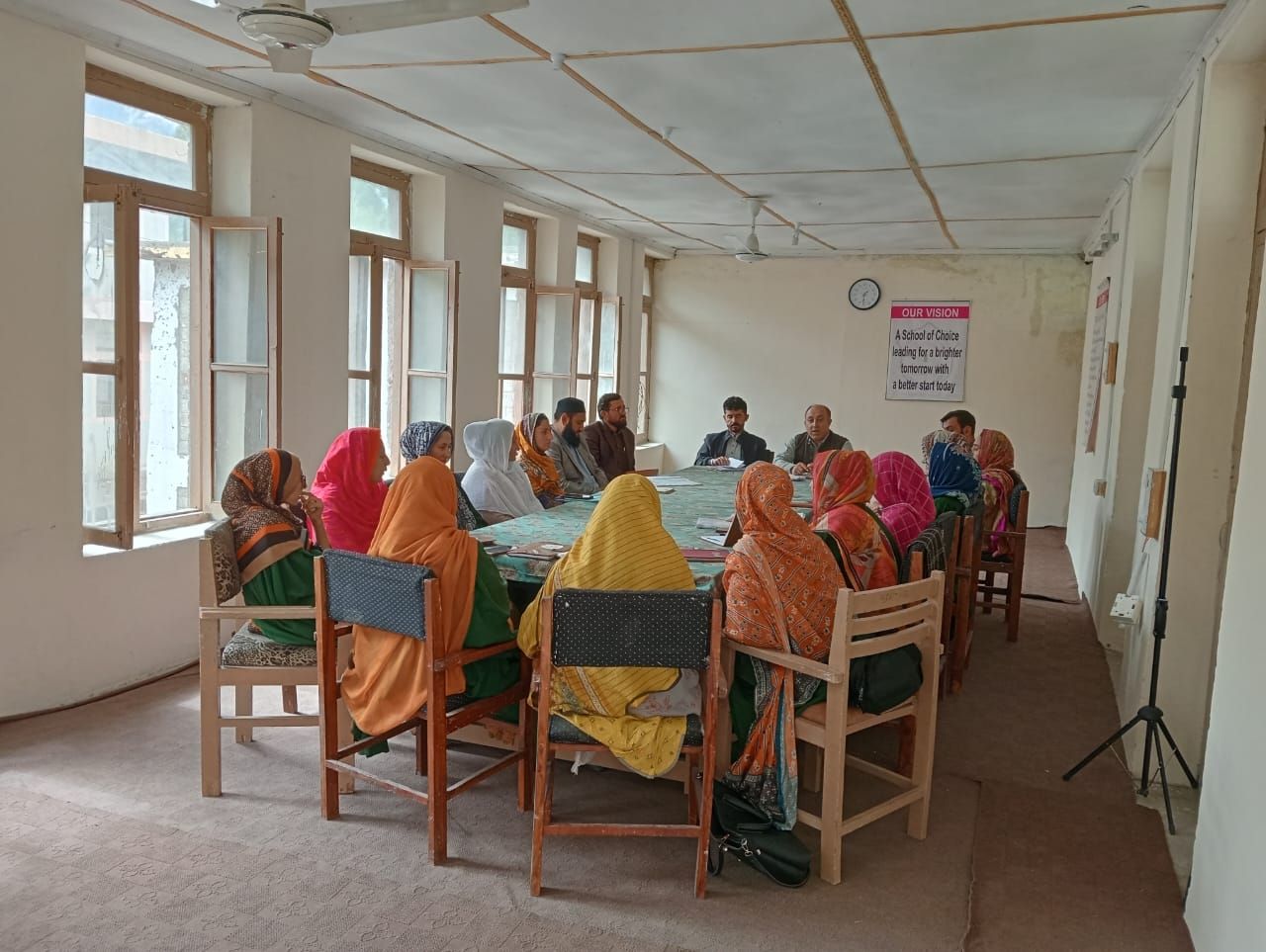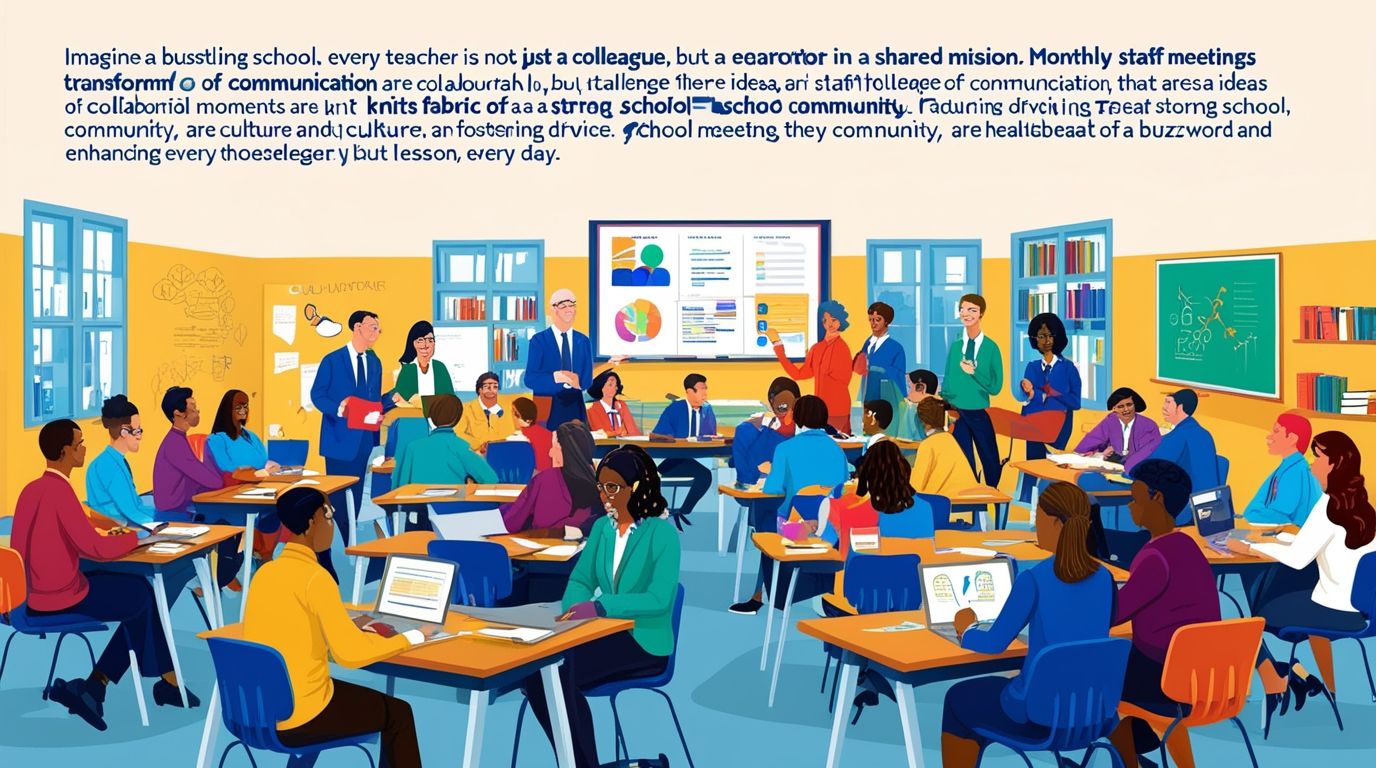Introduction
Monthly Staff Meetings in Schools for Communication and Collaboration, Monthly staff meetings in schools play a crucial role in fostering effective communication, collaboration, and strategic planning among educators and administrators. These meetings provide a platform for discussing important updates, sharing best practices, and aligning on school-wide goals. They are essential for maintaining a cohesive and productive school environment.
Importance of Monthly Staff Meetings
- Facilitating Communication and TransparencyMonthly staff meetings help ensure that all staff members are informed about school policies, changes, and upcoming events. This transparency fosters trust and ensures that everyone is on the same page, reducing miscommunication and misunderstandings (Johnson, 2022).
- Promoting Professional DevelopmentThese meetings often include professional development segments, allowing teachers to learn new strategies, technologies, or approaches that can enhance their teaching. This commitment to ongoing education ensures that staff members are continually growing and adapting to new educational trends (Smith & Anderson, 2021).
- Strengthening Team CollaborationStaff meetings provide a regular opportunity for teachers and staff to collaborate, share insights, and solve problems together. This collaborative approach can lead to more innovative solutions and a stronger sense of community within the school (White, 2020).

Structure of Effective Staff Meetings
- Setting a Clear AgendaAn agenda should be prepared and shared in advance, highlighting the key topics to be discussed. This helps to keep the meeting focused and ensures that all important items are covered (Brown, 2019). Agendas typically include updates on school policies, student performance, and upcoming events, along with time for questions and discussions.
- Time ManagementEffective time management is critical to the success of staff meetings. Meetings should start and end on time, with each agenda item given a specific time slot. This approach respects participants’ time and keeps the meeting on track (Davis, 2021).
- Encouraging ParticipationAll staff members should be encouraged to participate and share their perspectives. Creating a safe and open environment where everyone feels comfortable contributing is essential for a productive meeting (Green, 2020).
Key Agenda Items in Monthly Staff Meetings
- Review of Previous Meeting MinutesReviewing the minutes from the last meeting ensures continuity and accountability. It allows staff to follow up on action items and track progress on initiatives (Miller, 2021).
- Updates on School InitiativesRegular updates on school-wide initiatives, such as curriculum changes or new programs, help staff stay informed and aligned. This segment often includes reports from various departments or committees (Roberts, 2023).
- Student Performance and BehaviorDiscussing student performance and behavior is a common agenda item. It allows teachers to share insights and strategies for supporting students academically and behaviorally (Wilson, 2022).
- Professional Development and TrainingAs part of ongoing professional growth, staff meetings often include training sessions or workshops. These segments can cover a range of topics, from classroom management to the integration of new technology (Taylor, 2020).
Benefits of Monthly Staff Meetings
- Enhanced School CultureRegular staff meetings contribute to a positive school culture by fostering a sense of belonging and purpose among staff. When educators feel connected to their colleagues and school leadership, they are more likely to be engaged and motivated (Johnson, 2022).
- Improved Decision-MakingBy providing a forum for discussion and input, staff meetings enhance the decision-making process. Teachers and staff have the opportunity to voice their opinions and contribute to school-wide decisions, leading to more well-rounded and effective outcomes (Smith & Anderson, 2021).
- Support for TeachersMonthly meetings provide a support network for teachers, where they can discuss challenges, share resources, and celebrate successes. This peer support is invaluable in maintaining morale and reducing burnout (White, 2020).
Challenges of Monthly Staff Meetings
- Time ConstraintsFinding a time that works for all staff members can be challenging, especially in schools with varying schedules. Meetings that run too long can also be a source of frustration, as they may encroach on planning or personal time (Brown, 2019).
- Balancing Information Sharing with EngagementStriking the right balance between disseminating information and engaging staff in meaningful discussions can be difficult. Meetings that are too lecture-heavy can lead to disengagement, while those without structure can become unproductive (Davis, 2021).
- Maintaining ConsistencyEnsuring that meetings are held regularly and that all staff members are consistently engaged can be a challenge, particularly in larger schools. It requires commitment from leadership to prioritize these meetings and make them valuable for attendees (Green, 2020).
Conclusion
Monthly staff meetings are a vital component of a well-functioning school. They foster communication, collaboration, and professional growth, contributing to a positive school culture and improved outcomes for students. While challenges such as time constraints and maintaining engagement exist, with careful planning and commitment, these meetings can be highly effective. By setting clear agendas, encouraging participation, and focusing on continuous improvement, schools can make the most of their monthly staff meetings, ultimately benefiting both educators and students alike.
References
- Johnson, P. (2022). Enhancing Communication in Schools through Staff Meetings. Journal of Educational Leadership, 35(4), 233-245.
- Smith, A., & Anderson, K. (2021). Professional Development in Staff Meetings: Strategies for Success. Teaching and Learning Journal, 29(2), 112-125.
- White, R. (2020). The Power of Collaboration in School Staff Meetings. Education Today, 14(3), 89-99.
- Brown, L. (2019). Time Management Tips for Effective Staff Meetings. School Management Review, 7(1), 45-58.
- Davis, M. (2021). Engaging Staff in School Meetings: Best Practices. Educational Strategies Quarterly, 11(4), 205-218.
- Green, S. (2020). Encouraging Participation in Staff Meetings. Journal of School Leadership, 23(3), 150-162.
- Roberts, J. (2023). Key Agenda Items for Effective Staff Meetings. School Improvement Bulletin, 5(2), 78-88.

10 thoughts on “Monthly Staff Meetings in Schools for Communication and Collaboration”
Comments are closed.